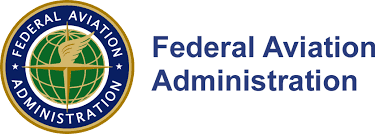
faa white
Compliance with FAA Part 135 regulations for public transportation of people will be essential for Urban Air Mobility (UAM) Operations, whether the aircraft are piloted, remotely piloted or autonomous. UAM flights need to meet the high level of safety the traveling public has come to expect from aviation. Regulators, including FAA and states, will be more comfortable approving UAM operations within metropolitan areas that are operated under the same safety and economic certification standards as commercial operators of passenger aircraft as part of the known and proven standards of Part 135, with some modifications for UAM aircraft, especially hybrid and electric powered aircraft.
To avoid the two-year processing by the FAA for new Part 135 certifications, UAM companies will most likely seek to purchase Part 135 certificates from existing operators, or merge with existing Part 135 operators and tuck flights under the operations of a company already operating under Part 135. The demand for acquisitions and merges with Part 135 certificated operators will increase as UAM operations begin to take-off.
Wing First Unmanned Airline Certificated Under Part 135
Google’s drone package delivery company, Wing, was the first unmanned packaged delivery airline to be certified under FAA Part 135. Wing Aviation has authority to operate commercial remotely piloted flights around Blacksburg, Virginia, which it plans to start later this year. The FAA in a press release said that the company met the agency’s safety requirements by participating in the FAA AUSIPP (Unmanned Aircraft Systems Integration Pilot Program) in Virginia with the Mid-Atlantic Aviation Partnership and Virginia Tech, and by conducting thousands of flights in Australia over the past several years. Wing was able to either comply, have waived, or got exemptions for the elements of a Part 135 operation, including drug testing, crew training requirements, operations manuals for flight and maintenance operations, passenger compliance (i.e. seat belts), ADS-B, two-way communications, weight and balance, hazmat compliance, flight attendant requirements, detailed maintenance plans, managerial oversight responsibilities to ensure that each FAR is followed, etc.
Wing has created a pathway for other companies to become certificated for unmanned aircraft commercial package delivery, which sets the precedent for eventually aerial passenger transportation. Amazon, UPS, DHL and FEDEX are actively conducting tests and refining their safety procedures. The fact that these well-known global package delivery companies have not yet received a Part 135 certificate for a similar program is a testament to how difficult the process is and underscores the importance of what Wing Aviation has accomplished.
FAA Operating Regulations
There are three sets of FAA operating regulations for commercial air service: Part 121, which is for aircraft larger than 10 seats, Part 135, for aircraft less than 10 seats, and Part 91 for private non-commercial business or personal aviation operations, regardless the size of aircraft.
Commercial air carrier operations offered to the public are certificated to either Part 121 or Part 135. FAA Part 121 operating regulations are applied to commercial air carriers and require the highest level of safety compliance. Part 135 operating regulations provide the equivalent level of safety for non-scheduled charter and air taxi operations, adjusted for the smaller size of the aircraft.
FAA has separate regulations for the airworthiness certification of aircraft, which is another discussion.
UAM Aircraft Under Part 135
For the most part, UAM aircraft are being designed to carry less than 10 passengers, including crew. Many of the Part 135 compliance issues faced by small UAS operations, such as having manuals onboard and seat belts, etc., will not be an issue for UAM aircraft. UAM aircraft will need to address the differences related to maintenance, training, fuel requirements as applied to batteries, crew qualifications, and passenger compliance such as seat belts, oxygen, ops specifications, all of which have not been defined.
The traditionally cumbersome air operator’s certificate (AOC) certification process will present challenges for UAM operators planning air taxi and air shuttle routes. The FAA utilizes a phase-and-gate system that has five distinct phases and three gates. The typical processing time for AOC certification takes more than two years, and the FAA has not provided any guidance on how this process may be streamlined for UAM operators. Many new entrant UAM operators may find that the certification process cost prohibitive.
The DOT citizenship requirements for AOC certification further complicates the ability of foreign companies to participate in U.S. UAM operations. Commercial operators of aircraft must be U.S. citizens. For corporations, that requires them to be organized under the laws of the U.S., a state, the District of Columbia, or a U.S. possession or territory. They must also have a U.S. citizen as president, and at least two-thirds of the board of directors and other managing officers must be U.S. citizens. Further, at least 75% of the voting interest must be owned or controlled by U.S. citizens. For partnerships to meet the citizenship requirements, all of their partners must be citizens of the U.S.
Insight
UAM aircraft operated in passenger transport will need to comply with the same safety standards as commercial airlines, but much remains undefined by regulators and the cost of regulatory compliance is expensive. According to some Part 135 operators the estimated cost of operating under Part 135 with a less than 10-seat aircraft, runs $20-$25 per passenger. To meet the demand for UAM air taxi services and air shuttles, a new market will develop for mergers and acquisitions with Part 135 operators, especially helicopter operators, to operate UAM flights in air taxi and air shuttle services.
Views: 11



